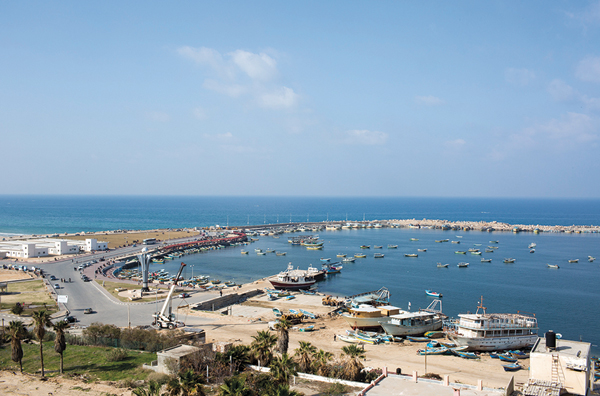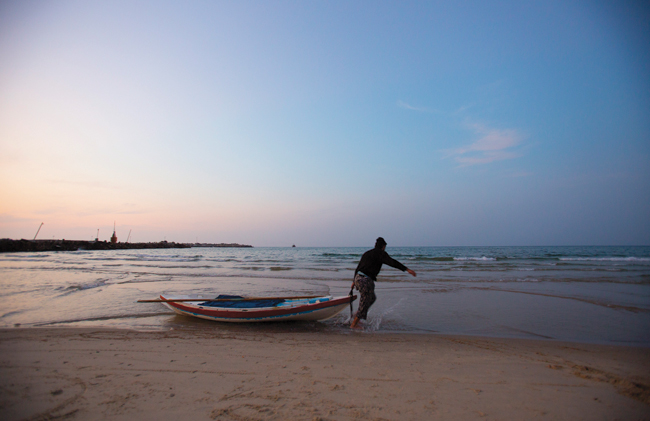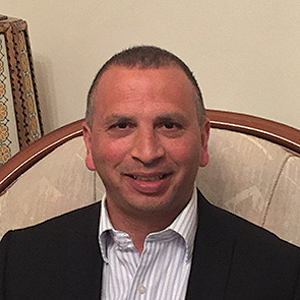
Take a few moments to imagine Gaza in 2050, where there is no occupation, no internal division, and no wars. Instead what you see are amazing pristine white beaches with a boardwalk full of people, bicycles, vendors, and activities for children and families. High-rise hotels and apartments dot broad boulevards with a magnificent view of the Mediterranean. A busy and vibrant port full of cargo and passenger cruise ships that connect East and West is fully operational. Beautifully cultivated and productive fields and greenhouses once again are exporting their agricultural products to countries in the region and around the world. A train route connects North Africa to the entire Middle East, bringing people together in the region like never before. Historical sites are full of tourists wanting to learn about the amazing history of this part of the State of Palestine. Gaza the strong, Gaza the beautiful rises from the ashes as a phoenix once again.
Throughout its 4,000-year history, Gaza has withstood invasion after invasion, only to find the means to rebuild and prosper. After three destructive wars, the 365-square-kilometer gem of potential lay basically in ruins for its 1.8 million inhabitants. To compound matters, Gaza continues to be under an air, sea, and land blockade by the Israeli government, with limited movement access through its southern border with Egypt. This has effectively compromised the ability of the Palestinian government to rebuild the territory in any substantial way. Thus, with a decimated private sector, weakened public sector, rampant unemployment that reaches 67 percent of youth (the highest in the world, according to the World Bank), Gazans are looking for means to escape.
UNDP and UN Habitat believe that there is an immediate need to inject hope. That there is an immediate need for the people of Gaza (as well as for the Palestinian State as a whole) to start creating a vision for their future and for that of generations to come. Thus, in coordination with the Palestinian National Spatial Planning team, the two UN agencies requested that the International Society of City and Regional Planners send an Urban Planning Advisory Team, comprising seven respected and capable international planners to work with local Palestinians from a variety of backgrounds to design and develop a possible framework for a future Gaza.
♦ Gaza could rise like a phoenix from the ashes and regain its historical splendor and beauty, being located on the Mediterranean coast and at a major crossroads between continents. But such development requires the lifting of the blockade to give Gazans the opportunity prosper again.
As a result of the mission, spatial-visioning reflection exercises were conducted to provide a mix of modern solutions while recognizing Gaza’s historical features. Such a visioning exercise, called a planning charrette, was helpful to local and national administrators and planners, policy makers, investors, and those with a technical perspective, as well as the Palestinian leadership and others, both in Gaza and Ramallah, to have a reference point to start from and an overall vision to work towards. The result of the exercise delineates how different particular areas of Gaza would be used according to a land-use spatial analysis that needs to be further elaborated in the future.* The visioning exercise shows the major road arteries and how they intersect, with a regional airport, as well as a marine port. It outlines green areas as well as the need to protect Gaza’s coast. It shows potential industrial zones and areas of continued agricultural productivity, as well as a newly built train line along Gaza’s eastern border and a new light passenger rail system in the middle of the Strip along Salah Eddin Road. On top off all this, the exercise provides for the introduction of bicycle lanes as a means to reduce pollution and congestion. All of the above support improved quality of life for the residents of the Gaza Strip.

At the same time, the spatial-visioning exercise recommended ways to best utilize the land, and how to build back better under normative frameworks for development, namely the 2030 Agenda for Sustainable Development, and the New Urban Agenda that were endorsed by the State of Palestine in September 2015 and October 2016, respectively. In addition, the mission discussed ways to best administer the Gaza Strip from an effectiveness and efficiency perspective. How is it that such a small territory (the size of Dublin, Ireland) has 25 municipalities? (How is it that the West Bank has over 130 municipalities?) Wouldn’t it be better that Gaza be administered as one planning block, where all the various communities are under one roof, planning together in an integrated manner, such as in New York City, rather than each on its own? This way we work towards a common approach. A 2015 UNDP Capacity Assessment of the 25 Gaza municipalities also raised the question of the long-term viability of such an approach. It is apparent that the continued governing of the Gaza Strip in such a fashion at the local level is neither cost effective nor in the best interests of Gaza residents.
♦ Based on the 2015 UNDP Capacity Assessment of 25 Gazan municipalities, it was identified that an area of “primary focus should be on local economic development, including linkages with regional planning processes.” Local Economic Development is a process used to promote equitable and sustainable growth in the economy (formal and informal) of a specific territory while ensuring its effective positioning within, and contribution to, its broader regional or national economies. It is a process that optimizes the utilization of a territory’s resources (productive, economic, natural, human, locational, and other) and effectively leverages a range of external inputs to advance its economic development objectives. It is a process that will encourage creativity and innovative solutions.
This being said, a consortium of Palestinian private-sector companies (Paltel Group, CCC, Palestine Investment Fund, Bank of Palestine, and Palestine Real Estate Investment Company), called the Global Palestine-Connected Gaza Alliance working in close cooperation with UNDP and the Norway Representative Office, have taken it upon themselves to hold a broad-based discussion on the fundamental need to establish some sort of regional development agency in Gaza to guide both development and investment opportunities. While this approach is in its infancy stage, just the thought of the private sector engaging to improve the lives of the residents of the coastal plain and consulting with our Palestinians in Gaza for a shared vision is a step in the right direction. The above would only benefit all efforts currently in place by the National Office for the Reconstruction of Gaza.
♦ For UNDP and Palestinian partners, especially the Ministry of Local Government, facilitating an environment for economic growth through more sustainable jobs and income generation opportunities is paramount to tackling Gaza’s high levels of unemployment and humanitarian aid dependency. As such, UNDP benefitting from its regional adviser on Local Economic Development (LED) (who by chance is also from Gaza), embarked on a pilot project in five Gaza municipalities (Rafah, Khan Younis, Deir El Balah, Nuseirat, and Beit Lahia) to institutionalize the establishment of LED units within the municipalities. In addition, a joint economic mapping of the targeted localities was undertaken with the Islamic University and MAS. This process in the end will lead to the establishment of LED forums of stakeholders who will identify projects and programmes that will promote economic development as one of many steps that will need to be taken to promote positive change on the ground in Gaza.
Many people have mentioned that this approach is idealistic and will not happen any time soon. Others have had reservations about some of the land-use patterns assigned, and still others have not looked favorably on the administrative ideas for Gaza. However, ten years after the implementation of this current Israeli blockade, many Palestinians, including the government, the private sector, the UN development agencies, Palestinian civil society organizations, and young people, as well as some in the international community, believe that changing the current realities of despair on the ground is the top national priority. There is no reason that Gaza and its people should have to go through one more day of this pain. As such, it is incumbent on the international community to put an end to the blockade. It is time for Palestinians to right their ship and end the internal division. It is time for the occupation to end so that Palestinians can realize their aspirations to live in dignity and freedom in order to achieve the relevant Sustainable Development Goals. It is time for Gaza to thrive again; time for it to become the gateway of prosperity once again.
» Born and raised in the United States, Nader Atta presently lives in the Palestinian city of Al-Bireh. He holds a BA in international relations from George Mason University and a master of technology in international development from North Carolina State University. As a young adult, he was one of the founding members of ROOTS, a Palestinian American Youth Organization based in Washington, DC. Since 1995, Mr. Atta has been working with the United Nations Development Programme/Programme of Assistance to the Palestinian People (UNDP/PAPP) in various capacities. Mr. Atta is currently deputy team leader for the Governance and Social Development unit.
* Plan Magazine, “Spatial Visioning Reflections: Gaza,” available at http://www.ps.undp.org/content/papp/en/home/library/democratic_governance/plan—spatial-visioning-reflections–gaza-.html.


